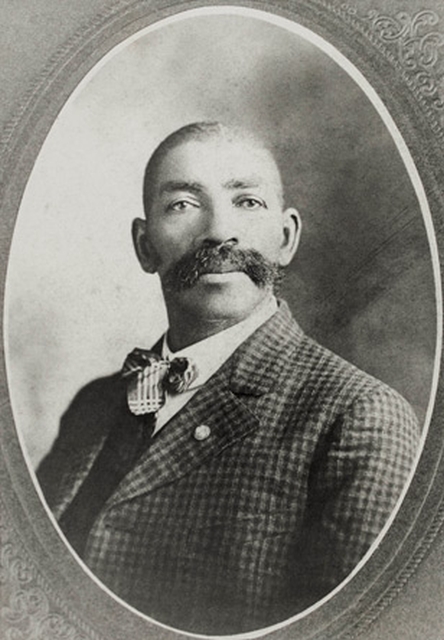
A recent issue of Texas Monthly ran an article called “Was the Lone Ranger Black?” Being an avid follower of Western Cowboy shows in the 1950s, the Lone Ranger was one of my most favorite. The article is fascinating, and I believe it was possible.
The story took place in the Chickasaw and Choctaw Nations in Indian Territory. Because this was about members of the U. S. Marshals and, in the Territory, it was extremely interesting to me. Two men, a posseman and Bass Reeves, left the federal courthouse in Fort Smith, Arkansas, with a writ for the arrest of one Jim Webb. They were after Webb, a drifter whom they had encountered before. This time the owner of the Washington-McLish ranch posted bail for Webb.
Of course, Webb did not hang around waiting for his time before Judge Isaac Parker. He hightailed it out of town with Reeves and his posseman in pursuit. So goes one of the many exploits of the legendary Bass Reeves. Reeves definitely was an outstanding person. You see, he was one of a very few Black men in the U. S. Martials, throughout the entire United States. And he was fast enough with his gun to see that Webb didn’t get away.
Bass Reeves was born a slave in Texas. He grew up in Paris where for several years he worked in the Federal courthouse there. Retired history professor Art T. Burton who has searched Reeves, noted “Bass Reeves walked into the Valley of Death every day for thirty-two years and came out alive.” But it is only recently Bass Reeves became a hero in the realm of American folklore. A question often mentioned is “Was Reeves the inspiration for the Lone Ranger.”
At Fort Smith in Arkansas where bandits were taken to Federal courthouse of Judge Isaac Parker, Reeves and his old boss saw people flock to town to see executions. Today the popular attraction is and was the Federal building. But Reeves and his part in folklore was scrubbed away as racism became part of the American past. Today it has been recovered by Professor Art Burton. As a child he questioned the reality of a deputy marshal arresting Black, Native, and white outlaws. Thanks to his curiosity we have the addition to folklore.
During the Civil War, Reeves’ master served in the Eleventh Texas Cavalry and took Reeves with him. As an insight, the Eleventh Texas Cavalry was created by young men in North Texas, including Hunt County. After the War, Ben Bickerstaff and his followers created havoc in Hunt and Hopkins Counties. It is unlikely that Reeves participated.
In 1870 Reeves was married and farming near Fort Smith. He had an outstanding reputation of social and geographic challenges in the Territory. He was hired as a posseman or guide. The term posseman served the same purpose as “batman” did with the British in World War I, as “wingman” does to U. S. air pilots today.
Later, Reeves would be promoted to “deputy” marshal with his own posseman.
He served his country until his death in 1910. So was he the Lone Ranger?
